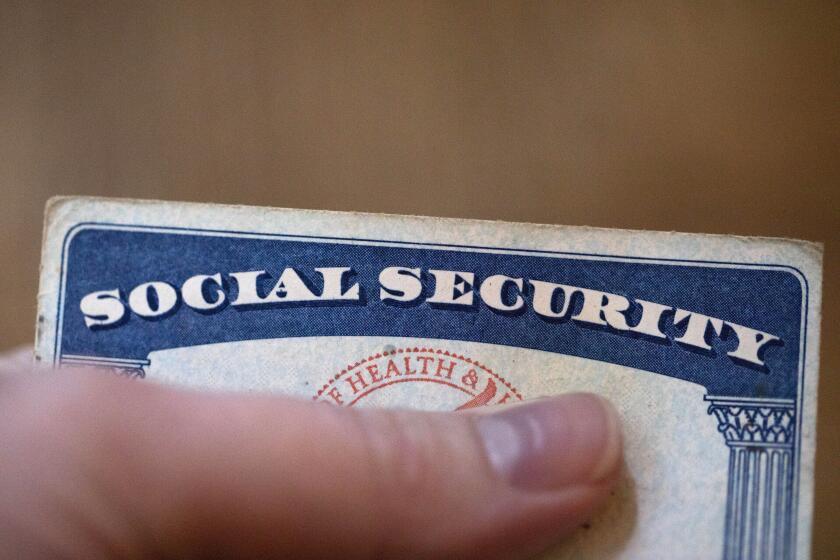Doctor’s attempt to bring lower-price diabetes drug to market thwarted
Dr. Mayer Davidson has long been frustrated by the rising cost of prescription drugs, especially in his area of expertise — diabetes.
He’s a professor of medicine at Charles R. Drew University and director of the diabetes program at the Martin Luther King Jr. Outpatient Center in South Los Angeles.
There must be a way, Davidson believed, to reduce the cost of treating what’s now one of the country’s fastest-growing illnesses. Only heart disease and strokes are more expensive to treat on average, according to the Centers for Disease Control and Prevention.
Davidson had reason for hope after he and colleagues came across research suggesting that a World War II-vintage malaria drug called Plaquenil, or hydroxychloroquine, could improve the blood-sugar counts of people with Type 2 diabetes.
“The meds coming out now are just too expensive,” he told me. “Our hope was that an old generic med like this would make it easier and cheaper to treat people.”
Unfortunately, even though Davidson received a research grant, he never got to fully test his hypothesis.
As with many generics, the price of Plaquenil has risen in recent months. Davidson said the wholesale price of the drug was 50 cents a pill last year. It’s now $1.75 — a 250% increase. The retail price is about $3 for each 200-miligram dose, according to price-comparison site GoodRX.com.
Davidson said his team’s modest funding couldn’t support such a price hike. They were unable to buy enough Plaquenil, even at the wholesale price, to study its long-term effect on a meaningful number of diabetic patients.
“We had to close down the study,” Davidson said.
A decision like that has enormous ramifications.
The more than 29 million people with Type 1 or Type 2 diabetes represent about $176 billion in annual medical treatment and an additional $69 billion in indirect expenses, such as disability payments and reduced productivity, according to the CDC.
Overall healthcare spending for each person with diabetes runs almost $15,000 annually, according to the Health Care Cost Institute. That’s about three times more than what people without the disease pay each year.
“I don’t think people realize how big a problem this has become,” Davidson said.
Full disclosure: I have Type 1 diabetes and rely on an insulin pump for my well-being. But rising drug prices are a problem for all Americans, not just people with diabetes. Higher drug costs lead to higher insurance premiums.
Davidson cited a recent paper in the Journal of the American Medical Assn. showing that prices of both generic and patented insulins have jumped more than 500% since 2001. The cost of a vial of one of the most commonly used fast-acting insulins, Humalog, soared to $234 this year from $35 in 2001, the journal said.
“We see low-income people who use insulin only every few days because they can’t afford it,” Davidson said. “We see people who sell their insulin on the black market because they need money.”
As a result, he said, the likelihood that these people will develop costly complications is much greater.
Davidson had contacted me after I wrote last week about rising prices of name-brand and generic prescription drugs.
Spending on prescription drugs overall rose 12.6% last year, or five times the 2.5% growth the year before, according to Medicare actuaries. A big contributor to that spike was hepatitis C drug Sovaldi, which cost about $1,000 a pill.
Chronic illnesses such as diabetes and heart disease account for 86% of the country’s $3 trillion in annual healthcare spending, according to the CDC, resulting in higher insurance costs for everyone.
Generic drugmakers blame the higher price of Plaquenil on increased demand. The drug also has proved effective in managing autoimmune disorders such as lupus and rheumatoid arthritis.
Davidson offered a more down-to-earth cause: profit.
“It’s whatever the market will bear,” he said. “Why else would a generic drug that’s been around for decades go up so much?”
Joel W. Hay, a pharmaceutical economist at USC, credited generics with playing an important role in keeping the overall cost of prescription drugs in check.
But when I described Davidson’s situation with Plaquenil, Hay said that “it’s hard to believe these prices are all due to supply problems.”
“It’s more likely that manufacturers are taking advantage of their unique market power,” he said.
Insurance companies warned in June that Medicare and Medicaid — i.e. taxpayers — will spend almost $50 billion over the next decade on just 10 super-pricey new drugs that haven’t even hit the market yet.
“These 10 drugs represent a small subset of the more than 5,400 medications in the drug pipeline,” said America’s Health Insurance Plans, an industry group. It said that “total prescription drug costs are expected to dramatically increase in the coming years.”
Davidson wanted to bring a lower-priced drug to market so that people with diabetes could afford to live longer and healthier lives.
He got nowhere.
David Lazarus’ column runs Tuesdays and Fridays. He also can be seen daily on KTLA-TV Channel 5 and followed on Twitter @Davidlaz. Send your tips or feedback to david.lazarus@latimes.com.
More to Read
Inside the business of entertainment
The Wide Shot brings you news, analysis and insights on everything from streaming wars to production — and what it all means for the future.
You may occasionally receive promotional content from the Los Angeles Times.










